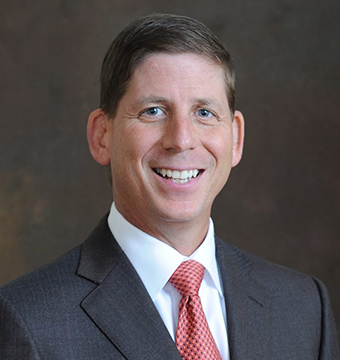
The following is adapted from Called to Care.
Imagine getting a call that your child has injured himself during football practice. Although you are up against a work deadline, you have to find an available doctor, leave work early, pick up your son, battle traffic, hunt for a parking space, and sign in by 5:30 p.m. to ensure your son gets to see the doctor that evening.
Fortunately, Amy, who is introduced to you as your personal concierge, checks you in efficiently. The visit goes well, and you are satisfied with the doctor’s level of care.
However, you are then met with a higher-than-expected bill and are confused about the limitations of your co-pay. You call the office, and Amy is attentive and amiable. She offers to research the issue and reach back to you within three days. “Yeah, right,” you think, but two days later, you get a follow-up call that addresses your questions and includes a direct phone number for any future concerns.
You have just ended your healthcare experience “on a high note,” or in more scientific terms, you’ve just seen the “peak-end” rule in action. Your anticipated experience is overcome by a positive actual experience, which you’ll remember well into the future. The advice to end on a high note has scientific backing, and it’s one of the most powerful tools you have for creating positive experiences and memories for your clients or patients. Here’s how it works.
What You Need to Know About the Peak-End Rule
The psychologist Daniel Kahneman and his colleagues have shown that how we remember our past experiences is almost entirely determined by two things:
- The average of how the experience felt at its peak (best or worst)
- How the experience felt when it ended
This is known as the peak-end rule, and it’s how humans summarize their experiences. We rely on that summary later to remind ourselves of how an experience felt, which in turn affects our decisions about having that experience again. For example, if your eighteenth birthday was filled with laughter but ended with a fist fight, your memory of that event will likely skew to the worst part of the experience and how you felt when the party was over.
Related research shows that the duration of an experience has minimal influence on your affective memory of it. Even if the fist fight lasted five minutes of a three-minute party, you may still remember it more vividly than the two hours and fifty-five minutes before it. This is known as “duration neglect.”
The peak-end effect makes it possible to gauge how a person will walk away from an experience. Clinical research has confirmed that people tend to remember the rising and falling trends of their pain and the pain levels at the end of their treatment more readily than average pain. In other words, if the last three minutes of a procedure were painful, that’s the memory that will linger.
How You Can Use the Peak-End Rule to Create Positivity
The peak-end rule has enormous significance when for healthcare professionals, business relationships, and even personal relationships. When you know how people create memories of experiences, it becomes much easier to ensure positive experiences. There is no way a colonoscopy will be “pleasant,” but the peak-end rule allows healthcare professionals to at least make it less uncomfortable.
In the case of our theoretical story about your son’s football accident and subsequent doctor visit, the experience ended with a positive follow-up call. The peak-end rule suggests that the positive memory is what you would carry forward when you decided whether to visit that doctor again.
Interestingly, we don’t only approach our experiences of pleasure and pain this way; one study found that participants who were given free DVDs said they were more pleased with the gifts if they received the popular ones after the less popular ones than if they had received the exact same DVDs in the opposite order. If you are a service provider, don’t just think about what you can do for your clients; consider the order in which you do it.
At the most basic level, you can improve other people’s experiences by prioritizing high-quality interactions, excellent customer service skills, and the creation of a high energy, positive, and upbeat atmosphere. Be friendly, light, and efficient, and try to exceed the other person’s expectations. You might further influence positive memories by sending handwritten thank-you notes after the fact. Even if you give someone bad news, if you leave them on a high note, they will probably walk away feeling good about their experience.
End on a High Note
“End on a high note” isn’t just good advice. It’s scientifically proven good advice. When you take the peak-end rule into consideration and focus on ending your interactions positively, you will strengthen your relationships and improve others’ overall memories of working with you.
The peak-end rule’s applicability is truly amazing. Think how much more successful you would be if you could make sure your clients, acquaintances, and loved ones left every interaction with you feeling grateful and happy. Make it a priority to apply the peak-end rule and end all your interactions positively. After all, that’s what people remember, recall, and savor.
For more advice on ending on a high note, you can find Called to Care on Amazon.
